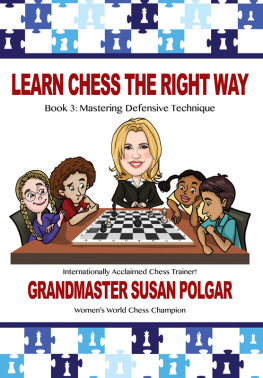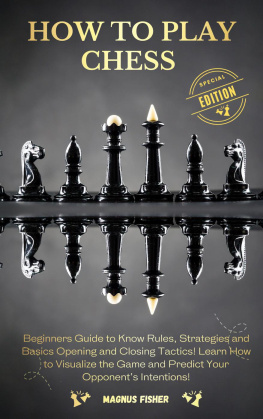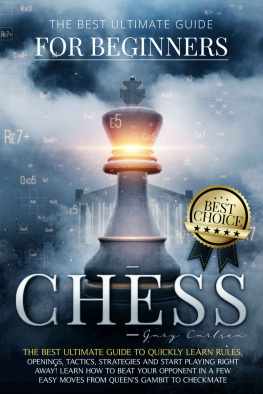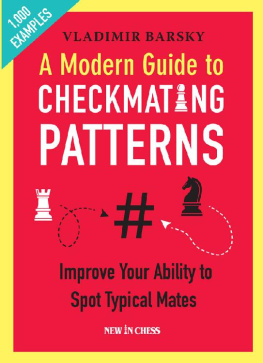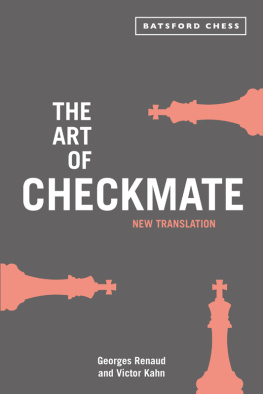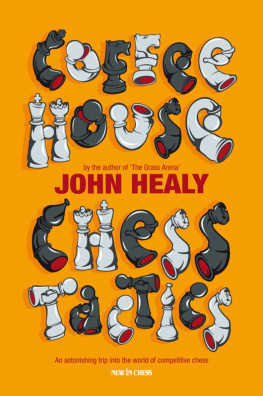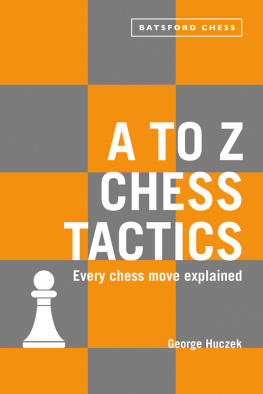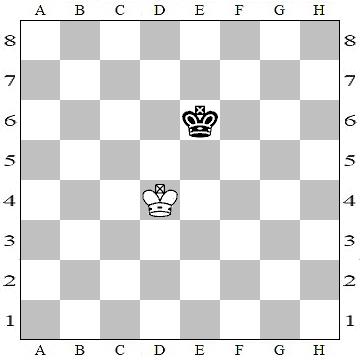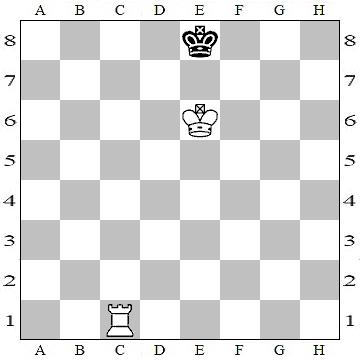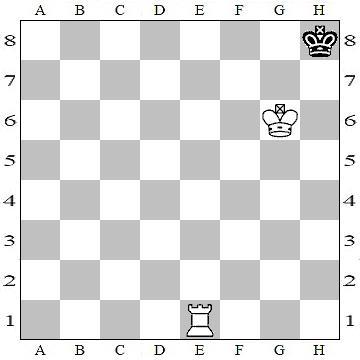FM Bill Jordan - Checkmate Made Easy: Essential Mating Patterns (Chess Concepts Made Easy Book 3)
Here you can read online FM Bill Jordan - Checkmate Made Easy: Essential Mating Patterns (Chess Concepts Made Easy Book 3) full text of the book (entire story) in english for free. Download pdf and epub, get meaning, cover and reviews about this ebook. genre: Children. Description of the work, (preface) as well as reviews are available. Best literature library LitArk.com created for fans of good reading and offers a wide selection of genres:
Romance novel
Science fiction
Adventure
Detective
Science
History
Home and family
Prose
Art
Politics
Computer
Non-fiction
Religion
Business
Children
Humor
Choose a favorite category and find really read worthwhile books. Enjoy immersion in the world of imagination, feel the emotions of the characters or learn something new for yourself, make an fascinating discovery.
- Book:Checkmate Made Easy: Essential Mating Patterns (Chess Concepts Made Easy Book 3)
- Author:
- Genre:
- Rating:5 / 5
- Favourites:Add to favourites
- Your mark:
Checkmate Made Easy: Essential Mating Patterns (Chess Concepts Made Easy Book 3): summary, description and annotation
We offer to read an annotation, description, summary or preface (depends on what the author of the book "Checkmate Made Easy: Essential Mating Patterns (Chess Concepts Made Easy Book 3)" wrote himself). If you haven't found the necessary information about the book — write in the comments, we will try to find it.
A mate may come as a single move, like a bolt from the blue. These are mates in one. More often there is a mating attack consisting of a sequence of alternating checks and check evasions.
The final check is mate.
A check is the most powerful move in Chess. The most powerful way to attack is to connect a series of checks.
The author draws from many positions that the author has used in years of chess coaching as a FIDE Master.
There are over 1000 diagrams which include mates in one, mates in two, mates in three and mates in four or more moves by each player.
There are many mating pattern which happen again and again in games. Strong players are familiar with many mating patterns and themes, through both play and study. This familiarity allows players to spot mates much quicker than they would otherwise. There is a strong correlation between playing strength and how quickly a player can find forced mates.
This book includes many positions that have been collected for coaching purposes over many years. The book is designed to help the reader quickly become familiar with many mating patterns. It may also help refresh familiarity with mates that have been previously seen, but partly forgotten.
The positions have been invented. However they are are very similar to positions from actual play and are quite unlike composed positions. In many cases they have been simplified and have few units on the board which are not involved in the mating attack.
Diagrams
In all positions White moves first and White is playing up the board.
Moves are numbered from the current position, not from the start of the game.
Look Inside the Book allows you to read 10% of the book. However, it disables line-breaks. When you download the full eBook, the line breaks will be normal and you will not see the answers until
you reach the next page.
The book uses standard chess notation, which is short Algebraic notation. It is desirable to know this.
There are different ways you can read this book.
- You can treat the positions as puzzles. You can choose the move you would play and move to the next diagram to check whether you are correct or not.
- You can simply enjoy playing through through the positions, becoming familiar with a wide range of mating patterns as you do so. You can quickly flip forwards (or backwards) through the
sequence of moves in each position. - You can combine both approaches. For example, during a first reading you could play through the positions. On a second reading you could see how many you can solve from the starting position.
You do not need a chess set and board to read this book.
See my authors page for information about my background and other books.
Important note: The Look Inside feature removes page breaks, so the text looks different from the real version.
FM Bill Jordan: author's other books
Who wrote Checkmate Made Easy: Essential Mating Patterns (Chess Concepts Made Easy Book 3)? Find out the surname, the name of the author of the book and a list of all author's works by series.


